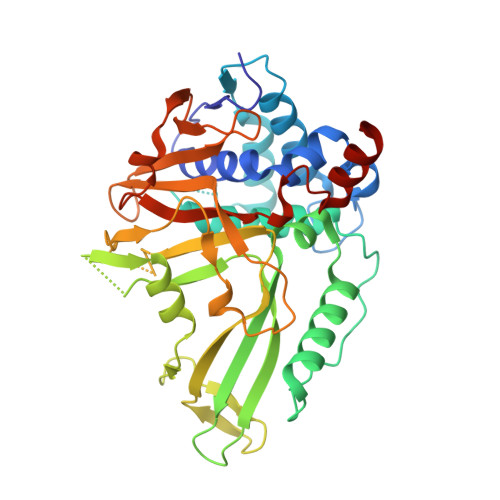Mitoxantrone stacking does not define the active or inactive state of USP15 catalytic domain.
Priyanka, A., Tisi, D., Sixma, T.K.(2022) J Struct Biol 214: 107862-107862
- PubMed: 35605756
- DOI: https://doi.org/10.1016/j.jsb.2022.107862
- Primary Citation of Related Structures:
7R2G - PubMed Abstract:
Ubiquitin specific protease USP15 is a deubiquitinating enzyme reported to regulate several biological and cellular processes, including TGF-β signaling, regulation of immune response, neuro-inflammation and mRNA splicing. Here we study the USP15 D1D2 catalytic domain and present the crystal structure in its catalytically-competent conformation. We compare this apo-structure to a previous misaligned state in the same crystal lattice. In both structures, mitoxantrone, an FDA approved antineoplastic drug and a weak inhibitor of USP15 is bound, indicating that it is not responsible for inducing a switch in the conformation of active site cysteine in the USP15 D1D2 structure. Instead, mitoxantrone contributes to crystal packing, by forming a stack of 12 mitoxantrone molecules. We believe this reflects how mitoxantrone can be responsible for e.g. nuclear condensate partitioning. We conclude that USP15 can switch between active and inactive states in the absence of ubiquitin, and that this is independent of mitoxantrone binding. These insights can be important for future drug discovery targeting USP15.
- Department of Biochemistry and Oncode Institute, Netherlands Cancer Institute, Plesmanlaan 121, 1066 CX Amsterdam, the Netherlands.
Organizational Affiliation:



















